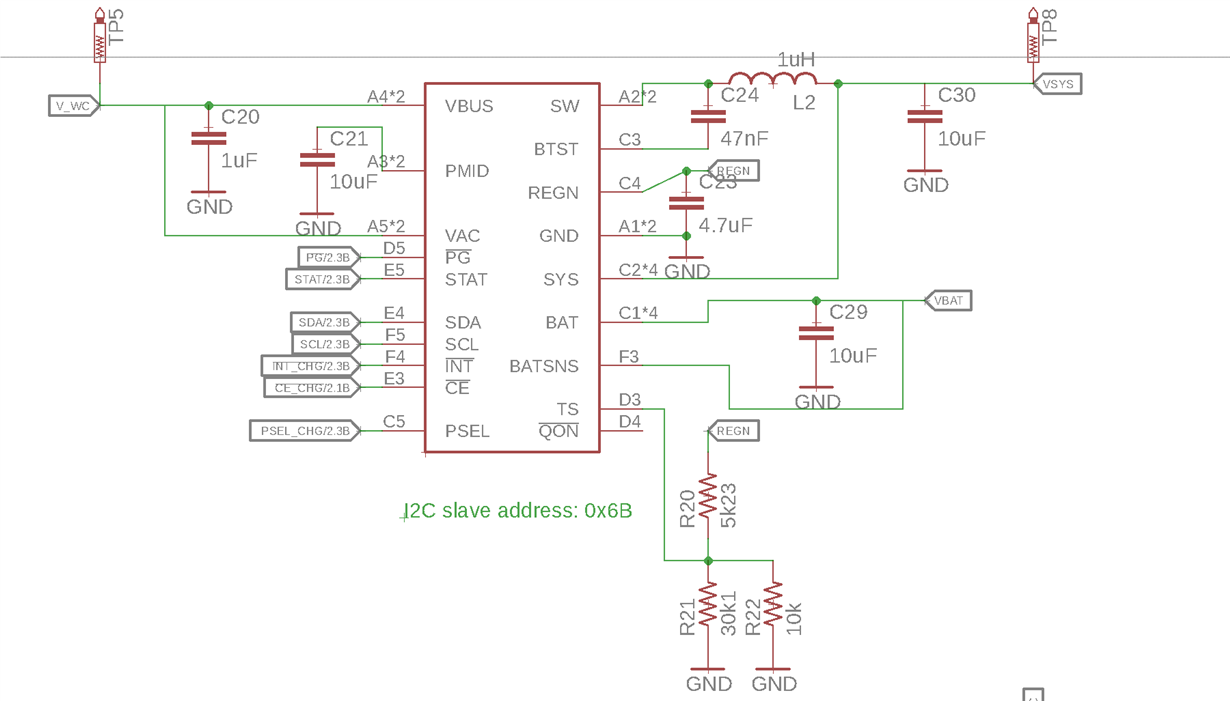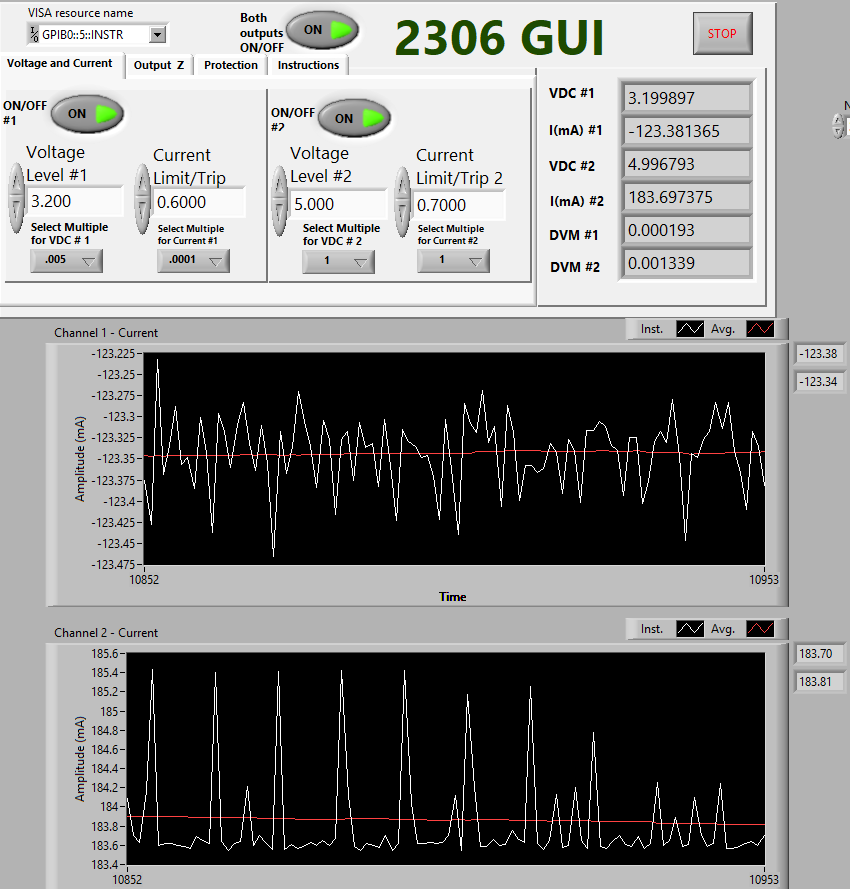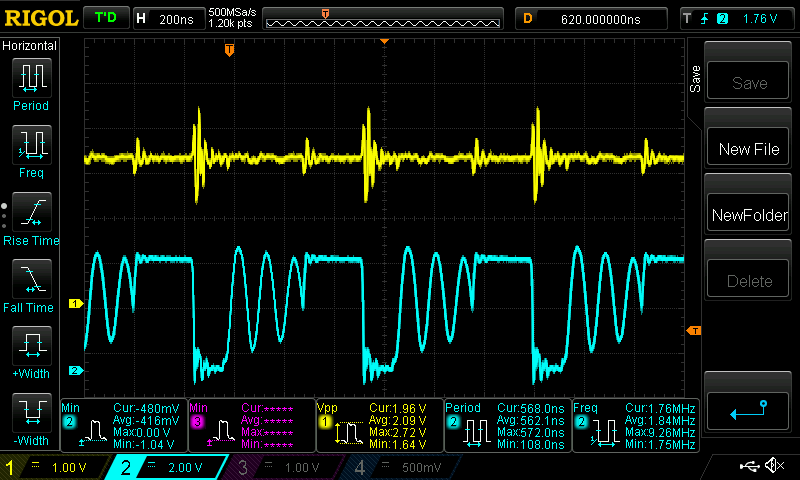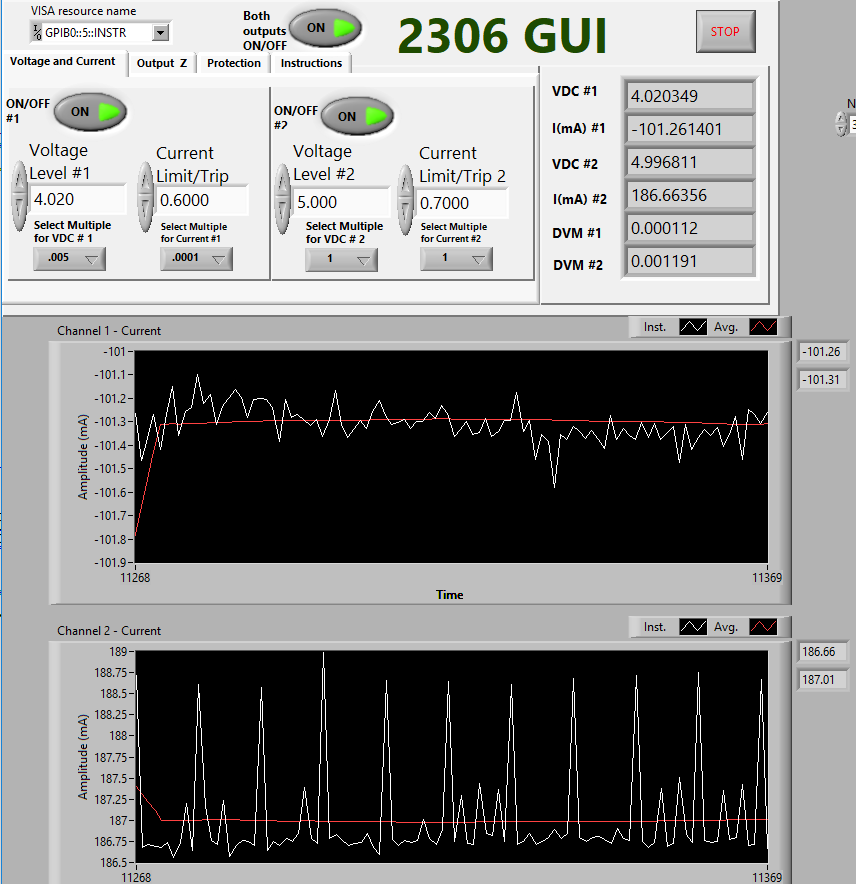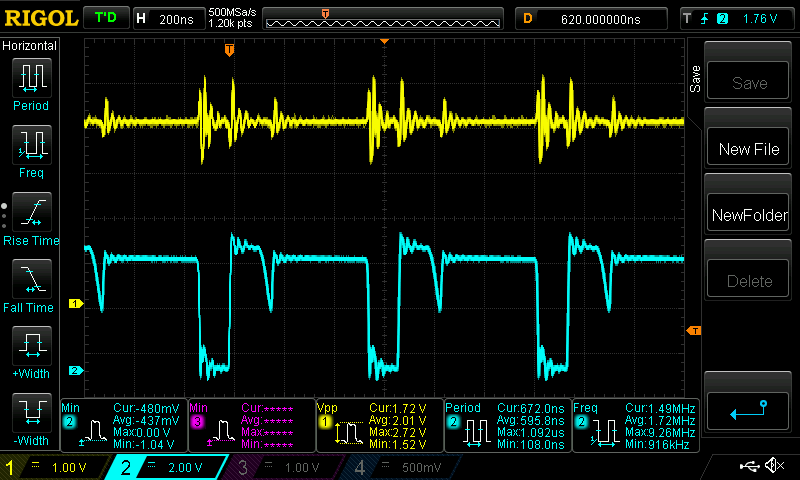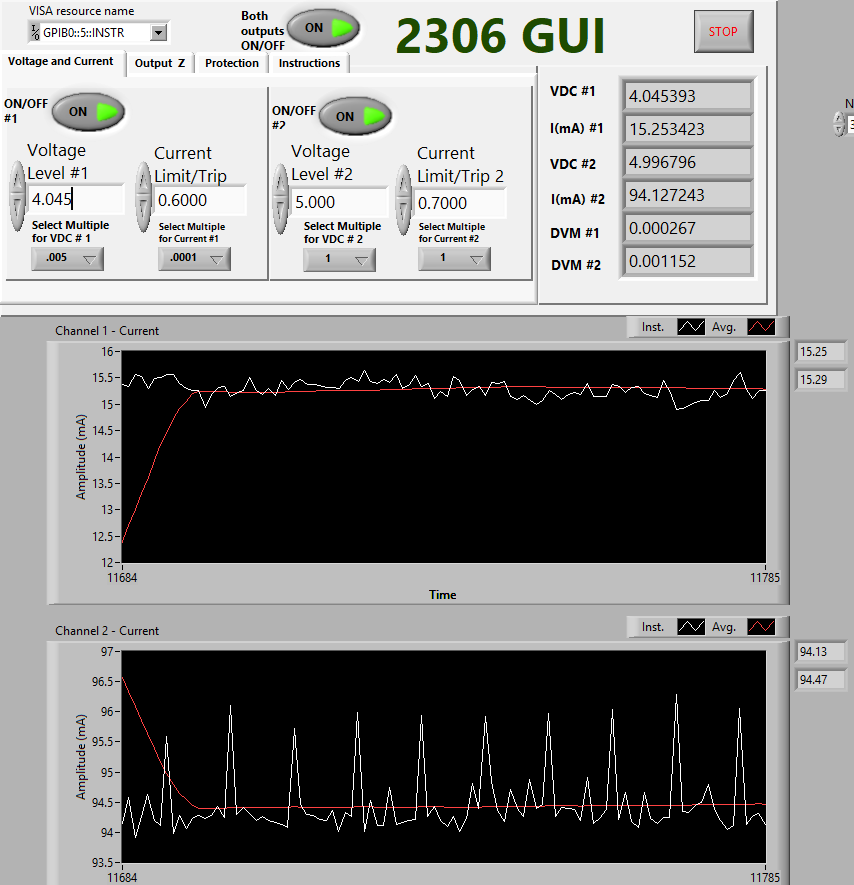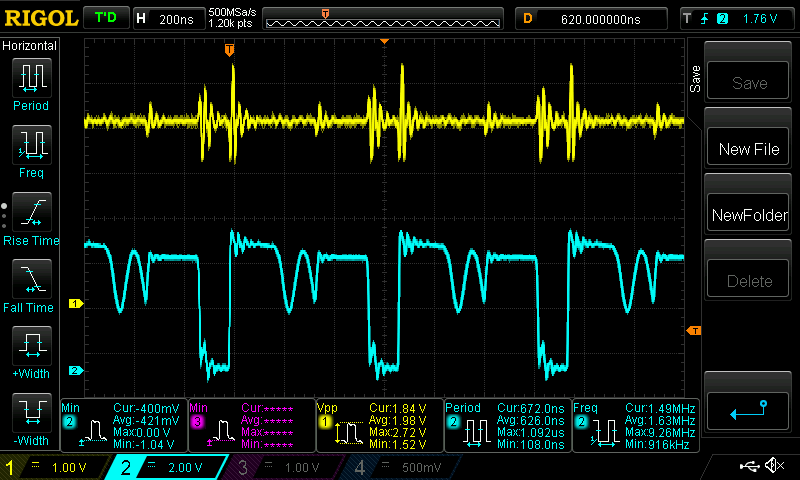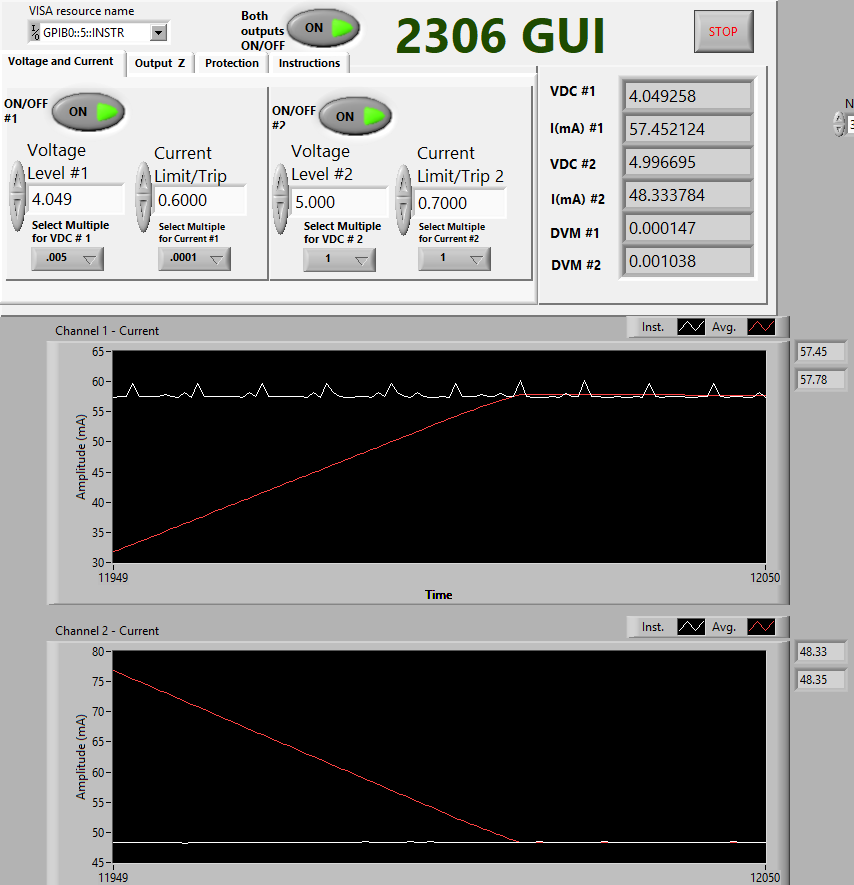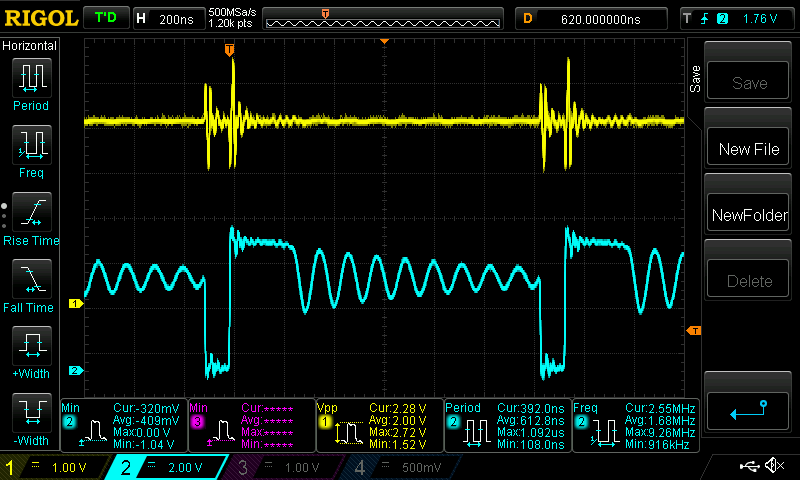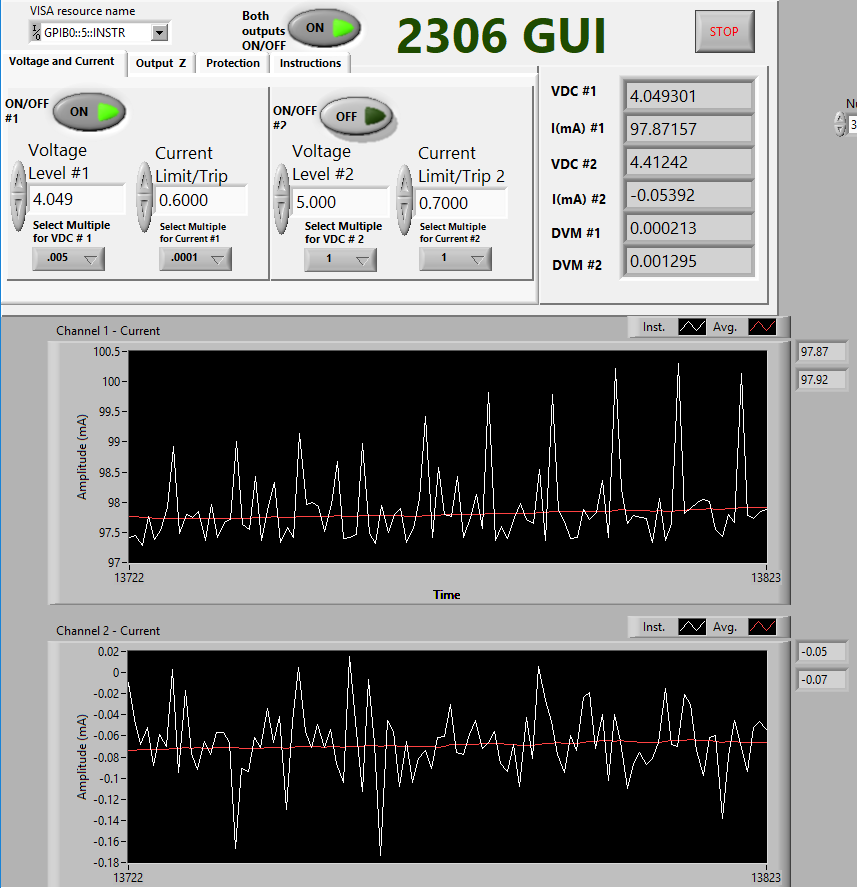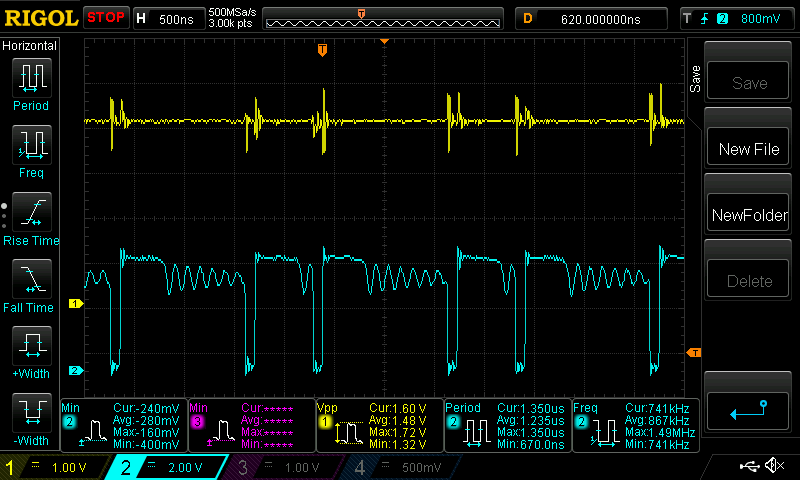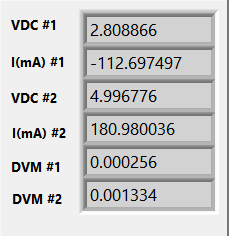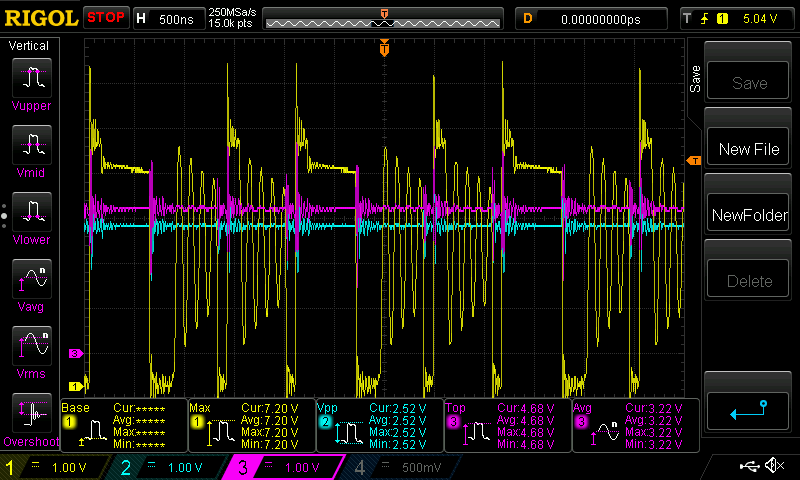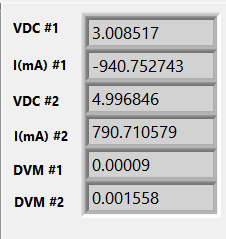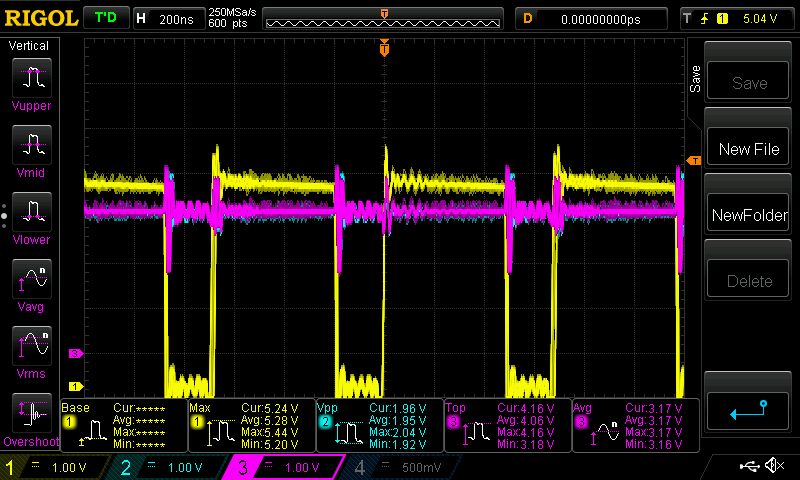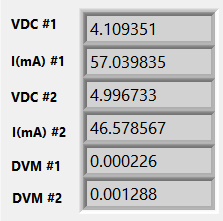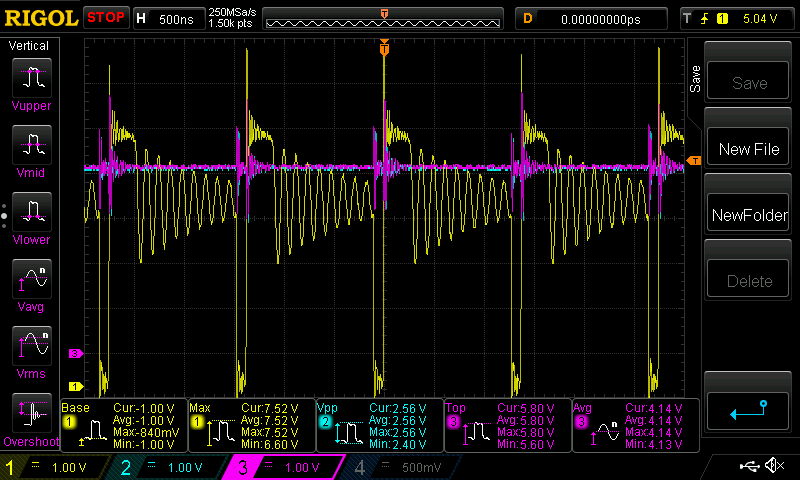Hello everyone,
We have designed a PCB which uses a bq25600 as the charger for the Lithium Ion system battery. In approximately 30% of the devices, we encounter an issue where the bq25600 starts consuming 100mA whenever the battery voltage rises above 4.05V. The charger then does not resume normal operation (and keeps consuming power) until the battery voltage falls under 3V.
The system architecture for the power section of our device is the following:
The issue persists even if we replace the battery with a battery simulator and the wireless charger with a conventional power supply. Using a thermal camera, we notice that the bq25600 becomes hotter with respect to its normal behavior.
The bq25600 is configured by a microcontroller as follows:
Minimum system voltage: 3.0 V
Input Current Limit: 500 mA
Charge Current: 240 mA
Precharge Current:120 mA
Termination Current: 120 mA
Regulation/Charge Voltage: 4.242 V
The CE pin is connected to GND and the PSEL pin is connected to Logic High (3V).
Dumping the bq25600 registers, the resulting configuration is:
[bq25600] Reg 0:0x04
[bq25600] Reg 1:0x14
[bq25600] Reg 2:0x82
[bq25600] Reg 3:0x31
[bq25600] Reg 4:0x60
[bq25600] Reg 5:0x8F
[bq25600] Reg 6:0x66
[bq25600] Reg 7:0x4C
[bq25600] Reg 8:0x00
[bq25600] Reg 9:0x00
[bq25600] Reg 10:0x00
[bq25600] Reg 11:0x01
The charger reports the following values during a fault condition:
[bq25600] Reg 0:0x04
[bq25600] Reg 1:0x14
[bq25600] Reg 2:0x82
[bq25600] Reg 3:0x31
[bq25600] Reg 4:0x60
[bq25600] Reg 5:0x8F
[bq25600] Reg 6:0x66
[bq25600] Reg 7:0x4C
[bq25600] Reg 8:0x34 (Power good, not in thermal regulation, not in Vsysmin regulation, FAST Charging, USB Host SDP (500mA))
[bq25600] Reg 9:0x00
[bq25600] Reg 10:0x80 (Vbus attached)
[bq25600] Reg 11:0x01
The schematic for the charger is the following:
We would really appreciate any help in solving this issue. Let me know if I can provide any additional information.
Thanks,
Luigi



